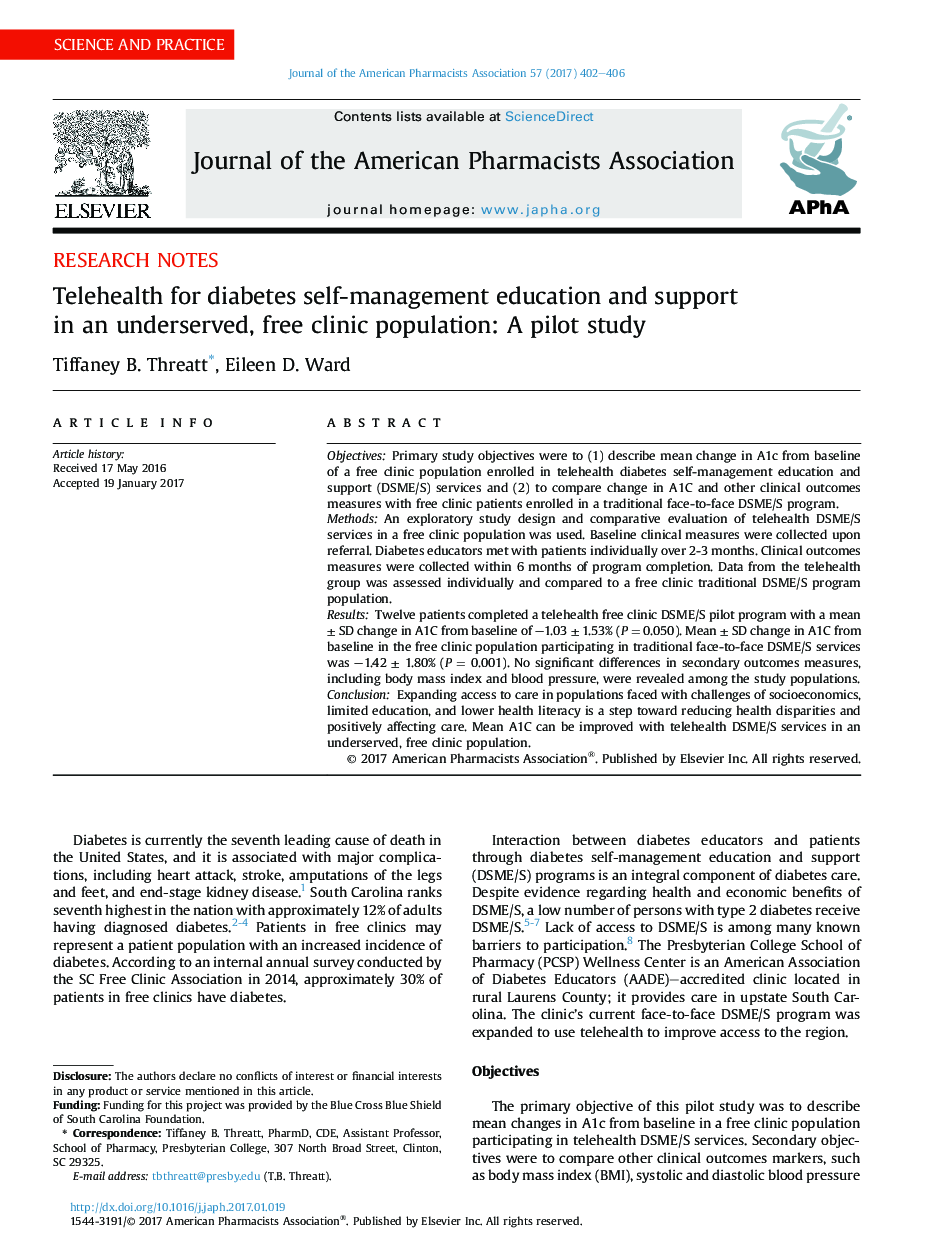| Article ID | Journal | Published Year | Pages | File Type |
|---|---|---|---|---|
| 5555850 | Journal of the American Pharmacists Association | 2017 | 5 Pages |
ObjectivesPrimary study objectives were to (1) describe mean change in A1c from baseline of a free clinic population enrolled in telehealth diabetes self-management education and support (DSME/S) services and (2) to compare change in A1C and other clinical outcomes measures with free clinic patients enrolled in a traditional face-to-face DSME/S program.MethodsAn exploratory study design and comparative evaluation of telehealth DSME/S services in a free clinic population was used. Baseline clinical measures were collected upon referral. Diabetes educators met with patients individually over 2-3 months. Clinical outcomes measures were collected within 6 months of program completion. Data from the telehealth group was assessed individually and compared to a free clinic traditional DSME/S program population.ResultsTwelve patients completed a telehealth free clinic DSME/S pilot program with a mean ± SD change in A1C from baseline of -1.03 ± 1.53% (P = 0.050). Mean ± SD change in A1C from baseline in the free clinic population participating in traditional face-to-face DSME/S services was -1.42 ± 1.80% (P = 0.001). No significant differences in secondary outcomes measures, including body mass index and blood pressure, were revealed among the study populations.ConclusionExpanding access to care in populations faced with challenges of socioeconomics, limited education, and lower health literacy is a step toward reducing health disparities and positively affecting care. Mean A1C can be improved with telehealth DSME/S services in an underserved, free clinic population.
